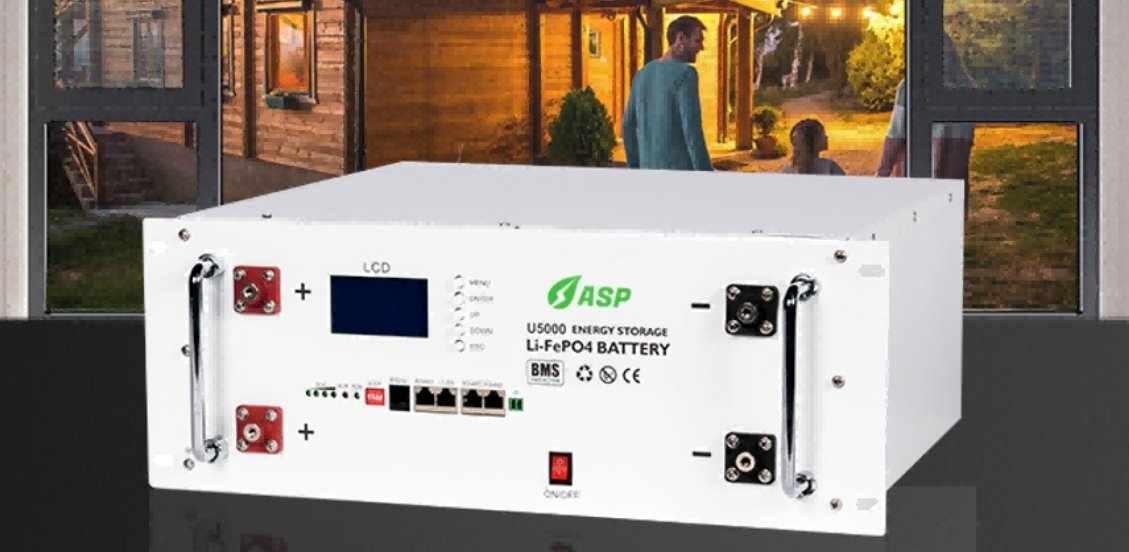An inverter battery is a key component for powering appliances in a home, especially in areas with unreliable power supply or for solar-powered homes. Understanding which battery is best suited for your home, how much capacity you need, and its installation and maintenance requirements can help you make an informed decision.
Inverter batteries play a crucial role in providing backup power and ensuring smooth energy flow in your home. Learn about the best types of inverter batteries, how much capacity you need, and their lifespan.
Ready to dive into the details of inverter batteries for home use? Let’s explore everything you need to know.
Which Type of Battery Is Best for a Home Inverter?
The choice of battery for your home inverter depends on your energy needs, budget, and system requirements.
The most common types of batteries for home inverters are lead-acid, lithium-ion, and LiFePO4 batteries. Each has its own set of benefits and drawbacks.
1. Lead-Acid Batteries
Lead-acid batteries1 are one of the most affordable options for home inverters. They are widely used in small to medium-sized inverter systems. However, they have a shorter lifespan and lower efficiency compared to newer technologies.
- Pros: Low upfront cost, widely available, reliable for smaller systems.
- Cons: Shorter lifespan (2-5 years), lower depth of discharge, less efficient.
2. Lithium-Ion Batteries
Lithium-ion batteries are becoming increasingly popular for home inverter systems due to their higher efficiency, longer lifespan, and smaller size. They are ideal for users looking for a more efficient and long-term solution.
- Pros: Longer lifespan (10-15 years), higher efficiency, faster charging.
- Cons: Higher initial cost.
3. LiFePO4 (Lithium Iron Phosphate) Batteries
LiFePO4 (Lithium Iron Phosphate) batteries2 are a type of lithium battery that offers even greater safety and stability compared to regular lithium-ion batteries. They are perfect for high-demand applications, such as solar-powered homes or homes with high energy usage.
- Pros: Very safe, long lifespan (up to 15 years), high efficiency, excellent thermal stability.
- Cons: Expensive compared to lead-acid.
| Battery Type | Pros | Cons |
|---|---|---|
| Lead-Acid | Low cost, reliable for smaller systems | Short lifespan, less efficient |
| Lithium-Ion | Long lifespan, high efficiency | Higher upfront cost |
| LiFePO4 | Safe, long lifespan, stable performance | Expensive upfront cost |
How Much Inverter Battery Is Sufficient for a Home?
The amount of battery capacity required for your home depends on your energy consumption, the size of your inverter, and how long you need to run appliances during a power outage.
The battery capacity is usually measured in amp-hours (Ah) or kilowatt-hours (kWh), and the required capacity varies based on the number of appliances you want to power and the desired backup time.
1. Estimating Your Power Needs
To determine how much inverter battery is sufficient, you need to know the total wattage of the appliances you want to run during an outage. Estimating your power needs3 is crucial. For example, if you want to power a refrigerator (200W), lights (100W), and a fan (75W), the total power requirement will be 375W.
2. Battery Size Calculation
To calculate the required battery size, consider the total wattage of appliances you want to run and the number of hours you need them to run.
Example: If you want to run 375W of appliances for 5 hours, the required battery capacity is:
[
\text{Required Capacity (Wh)} = \text{Power (W)} \times \text{Time (h)}
]
[
375 \times 5 = 1875 \, \text{Wh} \, \text{or} \, 1.875 \, \text{kWh}
]
[Battery size calculation](How to calculate the battery size for an inverter system?)4 is essential to ensure you select the right battery. If you're using a 12V battery system, the required amp-hour rating would be:
[
\text{Battery Size (Ah)} = \frac{\text{Required Capacity (Wh)}}{\text{Voltage (V)}}
]
[
\frac{1875}{12} = 156.25 \, \text{Ah}
]
Thus, for a 12V system, you would need a battery rated around 156 Ah for 5 hours of backup at 375W usage.
| Battery Requirement | Calculation Example |
|---|---|
| Total Power (W) | Sum of all appliances’ wattage |
| Required Capacity (kWh) | Multiply power by hours of usage |
| Battery Size (Ah) | Divide the required capacity by voltage (12V, 24V, etc.) |
Is Inverter Battery for Home Easy to Install?
Installing an inverter battery system at home is relatively simple but requires careful planning and correct setup to ensure safety and efficiency.
For smaller systems, a DIY installation may be feasible, but for larger setups or grid-connected systems, it’s best to hire a professional installer.
1. DIY Installation
For small inverter battery systems, such as those used for backup power in a few appliances, you can install the system yourself if you have basic electrical knowledge. Many manufacturers provide clear instructions and guidelines for installation.
2. Professional Installation
For larger systems, especially if integrating solar panels or grid-connected inverters, professional installation is recommended. A certified technician will ensure that the system is safely and properly set up, adhering to local electrical codes and standards.
3. Key Considerations
- Proper Sizing: Ensure that the inverter and battery are properly sized for your energy needs.
- Ventilation: Batteries, particularly lead-acid types, require proper ventilation to prevent overheating and off-gassing.
- Safety: Always follow safety guidelines, including proper grounding and circuit protection, to avoid accidents.
| Installation Option | Pros | Cons |
|---|---|---|
| DIY Installation | Low cost, control over installation | Requires electrical knowledge, can be tricky for large systems |
| Professional Installation | Safe, accurate setup | Higher cost, scheduling required |
What Is the Average Life of a Home Inverter Battery?
The average lifespan of a home inverter battery depends on factors like battery type, usage, and maintenance.
Most inverter batteries last between 3 to 15 years, with lithium-ion and LiFePO4 batteries generally offering longer lifespans compared to lead-acid batteries.
1. Lead-Acid Batteries
Lead-acid batteries typically last 3-5 years. Their lifespan can be shortened if they are deeply discharged regularly or not maintained properly.
2. Lithium-Ion Batteries
Lithium-ion batteries can last 10-15 years, depending on the quality and maintenance. They are more efficient and have a longer cycle life than lead-acid batteries, making them ideal for long-term use.
3. LiFePO4 Batteries
LiFePO4 batteries are the longest-lasting, with lifespans ranging from 12-15 years, and they offer excellent safety, efficiency, and thermal stability.
| Battery Type | Average Lifespan |
|---|---|
| Lead-Acid | 3-5 years |
| Lithium-Ion | 10-15 years |
| LiFePO4 | 12-15 years |
Conclusion
Choosing the right inverter battery for your home depends on your energy needs, budget, and the type of power system you are setting up. Whether you're looking for a budget-friendly option like lead-acid or a long-lasting, high-efficiency option like LiFePO4, understanding your requirements will help you select the best battery for reliable, efficient energy storage. With proper installation and maintenance, your inverter battery can provide years of reliable power.
Footnote:
-
This link explains the advantages and limitations of lead-acid batteries, including their affordability and common applications in home inverters. ↩
-
This link highlights the features of LiFePO4 (Lithium Iron Phosphate) batteries, emphasizing their safety, stability, and long lifespan. ↩
-
This link explains the process of estimating your power needs to determine the required battery capacity for your home inverter. ↩
-
This link provides a detailed guide on battery size calculation, including how to use power and runtime to determine the appropriate battery capacity. ↩







